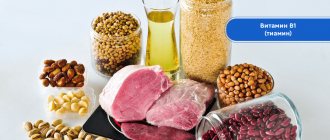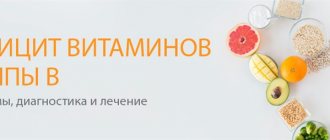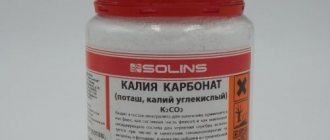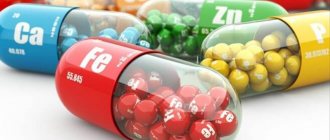The drug Neurobion is included in the subgroup of multivitamins. The complex consists of three B vitamins: thiamine (B1), pyridoxine (B6) and cyanocobalamin (B12). These substances play an important role in the proper functioning of the nervous system. They are not synthesized in the body. Therefore, if an insufficient amount of them enters the body with food, then taking the medicinal complex can make up for the deficiency.
Composition of the drug Neurobion
One Neurobion tablet contains the following active ingredients: thiamine hydrochloride (vitamin B1 / Thiaminum hydrochloride), pyridoxine hydrochloride (vitamin B6 / Pyridoxinum hydrochloride), cyanocobalamin (vitamin B12 / Cyanocobalaminum).
Auxiliary components: magnesium stearate, methylcellulose, corn starch, gelatin, lactose monohydrate, talc. Composition of the film shell of the tablet: wax, gelatin, methylcellulose, acacia, glycerol, povidone, calcium carbonate, colloidal silicon dioxide, kaolin, titanium dioxide, talc, sucrose. The Neurobion solution for intramuscular injection contains the following active ingredients: thiamine hydrochloride (vitamin B1 / Thiaminum hydrochloride), pyridoxine hydrochloride (vitamin B6 / Pyridoxinum hydrochloride), cyanocobalamin (vitamin B12 / Cyanocobalaminum). Auxiliary components: calcium cyanide, benzyl alcohol, sodium hydroxide solution, water for injection.
Pharmacodynamics and pharmacokinetics
The composition of the drug Neurobion includes a complex of neurotropic active substances of B vitamins:
- vitamin B1 (thiamine);
- vitamin B6 (pyridoxine);
- vitamin B12 (cyanocobalamin).
Each element of this vitamin complex plays an important biological role in the body, participating as coenzymes in intermediate metabolic processes that occur in the central and peripheral nervous system.
Moreover, when used in combination with each other, vitamins B1 , B6 and B12 have a more pronounced therapeutic effect compared to the effect of using each of them separately.
Like other vitamins, B vitamins cannot be independently synthesized by the human body, however, they belong to the category of essential substances for it, without which the normal functioning of all systems and organs is impossible.
An adult's need for vitamin B1 varies within the range of 1.5-2 mg per day, the need for vitamin B6 is 2 mg per day, and for vitamin B12 - 0.003 mg per day.
To one degree or another, they enter the body with food. Thus, the greatest amount of thiamine is found in brewer's yeast, cereals (in particular, in the germ and shell of wheat grains, in oats and buckwheat), as well as in bread baked from wholemeal flour.
Vitamin B6 is present in plants and various animal organs: in unrefined cereal grains, the liver of cod fish and cattle, milk, egg yolks, fish and yeast. Pyridoxine is also partially synthesized by the microflora of the intestinal tract.
Vitamin B12 in nature is produced only by microorganisms, so the body’s need for it is provided by the intestinal microflora. Further from the intestinal tract it enters the organs. In this case, the largest amount of cyanocobalamin accumulates in the liver, kidneys and intestinal walls.
If the natural synthesis of vitamins in the body is disrupted or they are supplied in insufficient quantities from food, their deficiency is compensated for by the therapeutic administration of multivitamin complexes.
The introduction of vitamins B1, B6 and B12 ensures the presence of normal concentrations of coenzymes in the body.
The use of the complex for the treatment of various types of neurological diseases allows, on the one hand, to compensate for the existing deficiency, and, on the other hand, stimulates natural recovery mechanisms.
Results from animal studies have shown that the combined use of thiamine, pyridoxine and cyanocobalamin provides analgesic effects.
It has also been proven that all B vitamins, to one degree or another, can have an analgesic effect. In this regard, cyanocobalamin is placed in first place, followed by pyridoxine, and then thiamine. However, the complex of vitamins has a more pronounced effect than therapy using each of them separately.
In addition, vitamins B1, B6 and B12 are characterized as low-toxic substances (when used in recommended doses), therefore their use does not harm human health and does not pose a threat to his life.
There is currently no data on their carcinogenic, mutagenic and teratogenic properties.
Clinical experience confirms that parenteral use of the complex, which includes thiamine, pyridoxine and cyanocobalamin, allows you to effectively:
- relieve pain;
- normalize reflex reactions;
- restore impaired sensitivity.
Unlike non-steroidal anti-inflammatory drugs, which provoke a fairly large number of side effects (mainly from the gastrointestinal tract), B vitamins are much better tolerated by patients.
Randomized studies have shown that after intramuscular administration of vitamin B12 to patients with chronic back pain, the latter experienced a significant reduction in pain severity and improvement in motor function.
Its use as a treatment for neuropathic pain in patients suffering from diabetic polyneuropathy has contributed to:
- reducing the severity of pain;
- reducing the severity of skin sensitivity disorders ( paresthesia );
- reducing the feeling of burning and chilliness.
Studies of the pharmacological properties of vitamin B6 have led to the conclusion that in high concentrations it can cause intoxication of the body . A dose of 200 mg per day is considered safe.
As for vitamin B1, studies of its effectiveness in patients with diabetic or alcoholic polyneuropathy , conducted between 1966 and 2005, showed that its use in large doses promotes:
- short-term reduction in pain intensity;
- reducing the severity of paresthesia ;
- improving temperature sensitivity;
- improving vibration sensitivity.
Each of these studies emphasized the very good tolerance of vitamin B1 by patients.
There is also data on the results of a double-blind study of the drug Neurobion, dedicated to studying its effectiveness as a prophylactic agent for back pain.
During the experiment, half of the patients took one Neurobion tablet three times a day for six months after completing the course of treatment for the acute phase of the disease, the other half took a placebo.
The results are:
- In the group taking Neurobion, the number of patients without pain increased (compared to the group in which people received placebo).
- The frequency of painful attacks during the observation period in the group taking Neurobion decreased significantly compared to the group in which patients received placebo.
- Regardless of what methods of accompanying therapy were used, a positive effect was described in 78% of all cases of treatment with the drug.
In patients with polyneuropathy, positive dynamics after the administration of Neurobion injections were observed in 86% of cases. For back pain, the therapeutic effect was rated as very good in 45% of cases; another 47% of patients in this group noted a significant or gradual moderate improvement in their condition.
Tolerability of the drug was characterized by doctors as “good” or “very good.”
Thiamine, pyridoxine and cyanocobalamin in the recommended dose range do not provoke the development of undesirable side reactions (or the reactions that occur during their use are mild).
After oral administration of thiamine, its dosed transport is observed, which is characterized by a dual mechanism of action:
- thiamine is actively absorbed to a concentration of 2 µmol;
- When the concentration of thiamine is more than 2 µmol, its passive diffusion is observed.
The half-life of the substance is approximately 4 hours.
Thiamine in the human body is not able to accumulate in a dose exceeding 30 mg. Therefore, given its fast metabolism and limited reserve reserve, the latter is consumed on average in 4-10 days.
Absorption of pyridoxine after oral administration occurs very quickly and mainly in the upper gastrointestinal tract. It is eliminated from the body on average from 2 to 5 hours.
The concentration of vitamin B6 in the body can vary from 40 to 150 mg, with 1.7 to 3.6 mg excreted in the urine per day.
Absorption of cyanocobalamin in the gastrointestinal tract occurs through two mechanisms:
- as a result of its release under the influence of digestive juice and rapid binding to the internal factor;
- without binding to intrinsic factor, through passive entry into the bloodstream (this mechanism is used as a priority at doses of vitamin B12 exceeding 1.5 mcg).
Vitamin B12 is stored mainly in the liver. Its metabolic rate is 2.5 mcg per day, which is approximately 0.05% of the stored amount.
Its excretion is carried out mainly with bile, and cyanocobalamin is largely reabsorbed during enterohepatic circulation.
In patients with B12 deficiency ( megaloblastic ) anemia , after taking a dose equal to or greater than 100 mcg of cyanocobalamin, only 1% of this substance is absorbed.
Pharmacological properties of the drug Neurobion tablets
Pharmacodynamics. The drug contains a combination of neurotropic active substances of the vitamin B complex. The vitamins included in the composition: thiamine (B1), pyridoxine (B6) and cyanocobalamin (B12) play a special role as coenzymes in intermediate metabolism in the central nervous system and peripheral nervous system. Like all other vitamins, they are essential nutrients that cannot be synthesized directly in the body. The therapeutic introduction of vitamins B1, B6 and B12 into the body replenishes the insufficient intake of vitamins from food, which ensures the presence of the required amount of coenzymes in the body. The combined use of B vitamins increases their therapeutic effectiveness, since it is believed that the effectiveness of the combination exceeds the effectiveness of its individual components. The therapeutic use of these vitamins for various diseases of the nervous system is aimed, on the one hand, at compensating for simultaneously existing deficiency (possibly due to an increase in the body's need caused directly by the disease) and, on the other hand, at stimulating natural recovery mechanisms. At the same time, the analgesic effect of the B vitamin complex has a beneficial effect on the therapeutic result. Pharmacokinetics. Thiamine. After oral administration, its dosed transport occurs, the mechanism of which has a dual nature: active absorption up to a concentration of 2 µmol and passive diffusion at concentrations of 2 µmol. The half-life is approximately 4 hours. The human body can contain up to 30 mg of thiamine. Given the rapid metabolism, reserve reserves are very limited and are used up in 4–10 days. Pyridoxine. Pyridoxine is absorbed very quickly, mainly in the upper gastrointestinal tract, and is excreted within a maximum of 2–5 hours. The human body can contain approximately 40–150 mg; 1.7–3.6 mg is excreted in urine per day. Cyanocobalamin . Vitamin B12 is absorbed into the gastrointestinal tract using two mechanisms: release under the influence of gastric juice and rapid connection with intrinsic factor; regardless of the internal factor, due to passive entry into the blood. At doses of 1.5 μg, the latter mechanism plays a significant role. In patients with pernicious anemia, approximately 1% is absorbed after doses ≥100 mcg. Vitamin B12 is mainly excreted in bile and is largely reabsorbed during enterohepatic recirculation.
Indications for use
The drug Neurobion is recommended to be prescribed as one of the means of complex therapy:
- for trigeminal neuralgia ;
- with thoracalgia ( intercostal neuralgia );
- for lumbosacral radiculitis ( sciatica );
- with plexopathy of the cervical and brachial plexus;
- with radicular syndrome , which occurs in the process of compression of the spinal roots and is a consequence of degenerative diseases of the spine;
- with prosoparesis ( Bell's palsy ).
Contraindications
Contraindications to the use of each of the substances included in the vitamin complex are different.
Thus, thiamine is contraindicated for people suffering from allergic diseases. Pyridoxine is not prescribed for exacerbation of a patient's gastric and duodenal ulcers . This is due to the fact that the drug can provoke an increase in the acidity of digestive juice in the stomach.
Cyanocobalamin should not be taken in case of erythrocytosis , Vaquez disease (primary polycythemia), or thromboembolism .
Indications and contraindications for use
A medicinal complex based on group A vitamins is indicated for complex therapy of various neurological diseases. It has proven its effectiveness in the treatment of neuritis and neuralgia. In particular, thanks to it, the process of treatment of the following pathologies is accelerated:
- Neuritis of the facial nerve, a pronounced symptom of which is a violation of facial expressions. The disease develops against the background of hypothermia, infection, oncology, and poisoning.
- Trigeminal neuralgia, characterized by sharp shooting pain of high intensity in the facial area.
- Intercostal neuralgia, which is characterized by pain in the chest area caused by compression of the nerve roots.
Neurobion is prescribed, the instructions for use indicate this, for pain caused by various diseases of the spine.
A contraindication to taking a complex vitamin product is individual intolerance to any component in its composition. The drug Neurobion is not prescribed, the instructions focus on this, up to 18 due to its high activity. For this reason, you should also avoid using it during pregnancy and lactation.
The complex should be used with caution during exacerbation of a stomach ulcer, as pyridoxine increases the pH level. In addition, the drug should not be taken for thromboembolism, erythrocytosis and polycythemia, since it contains cyanocobalamin.
Side effects
Oral use of the drug in some cases may cause the development of allergic reactions , which are mostly expressed in the form of rashes on the skin.
After injections of Neurobion, local reactions to the administration of the drug may develop at the injection site. Intravenous administration provokes difficulty breathing, symptoms of exanthema and anaphylactic shock .
The gastrointestinal tract may respond to taking the drug by increasing the acidity of gastric juice, attacks of nausea , vomiting , flatulence , stool disorders and pain in the epigastric region.
In rare cases, immune reactions are possible, which include:
- reactions caused by hypersensitivity;
- increased sweating;
- tachycardia;
- anaphylaxis.
Sometimes, against the background of long-term use of vitamin B6 (at least six months) at a dose exceeding 50 mg per day, the patient may experience symptoms of sensory neuropathy , increased nervous excitability, general malaise, attacks of headaches and dizziness.
Side effects
The most common negative reaction of the body while taking the drug Neurobion, reviews confirm this, is an epidermal rash. Local irritation sometimes occurs at the injection site. May appear
- Exanthema, which is characterized by skin rashes in the form of spots, papules or vesicles.
- Anaphylaxis, in which, against the background of edema and satiety, problems with the respiratory process and cardiac activity occur.
Other less common possible reactions:
- Problems with the gastrointestinal tract: bloating, stomach pain, bowel movements, etc.
- Problems with the functioning of the immune system.
Neurobion injections and tablets, instructions for use
The drug in the form of a solution for intramuscular injection in severe cases is prescribed one ampoule per day (the solution is injected deep into the muscle) until the symptoms that characterize the acute phase of a particular disease are eliminated.
After the severity of the clinical manifestations of the disease has decreased, as well as in cases where Neurobion injections are prescribed for the treatment of diseases of moderate severity, the drug is recommended to be administered one ampoule twice or thrice a week.
The duration of treatment after symptoms have been relieved is two to three weeks.
If it is necessary to enhance the effect, continue treatment after a course of injections and for preventive purposes to prevent the development of relapse of the disease, therapy is supplemented with the prescription of Neurobion tablets.
The tablets are taken during or after a meal, swallowed whole, without chewing or gnawing, with a small amount of liquid. The daily dose for adult patients and children over 15 years of age is 3 tablets (one three times a day).
According to the instructions for Neurobion for children under 15 years of age, the optimal dose of the drug is selected individually by the attending physician.
The duration of the therapeutic course is also determined individually depending on the severity of the disease and the nature of its course. The maximum treatment period is 4 weeks.
If, after its completion, there is still a need to continue taking the drug, a decision is made to adjust the dose towards its reduction.
Rules for using the complex
Injections are indicated for complex treatment of a specific pathology in the acute stage of development. Dosage for deep intramuscular injection – 1 ampoule per day. Treatment is carried out until the expressed symptoms of the disease completely disappear. If there is a decrease in the intensity of symptoms, then the dosage of the drug is reduced to 1 ampoule 2-3 times a week.
Tablets are prescribed as a prophylactic agent and to prevent relapses of pathologies. They are taken whole during or after meals, washed down with clean water. You can take up to 3 tablets per day. The duration of the course of treatment in each specific case is prescribed by the doctor, taking into account the severity of the pathology and the patient’s condition.
Overdose
When the dose of thiamine recommended in the instructions for the drug is significantly exceeded (more than 10 g), curare-like effects are observed and the conductivity of nerve impulses decreases.
Pyridoxine belongs to the group of low-toxic drugs. When taken daily for six months to a year at a dose exceeding 50 mg, symptoms of peripheral sensory neuropathy .
The use of pyridoxine at more than 1 gram per day for several months can provoke neurotoxic reactions.
If the daily dose over a long period of time is 2 grams or more, the following are possible:
- neuropathy , accompanied by signs of ataxia and sensitivity disorders;
- convulsions, which are accompanied by changes in the encephalogram;
- hypochromasia;
- seborrheic dermatitis.
After administration of cyanocobalamin parenterally (and sometimes after taking the drug per os) in increased doses, the following may be observed:
- eczematous skin disorders;
- benign forms of acne ;
- symptoms of allergic reactions.
Long-term use of large doses of vitamin B12 leads to disruption of liver enzyme activity, pain in the heart, and increased blood clotting (hypercoagulation).
Overdose of the drug Neurobion tablets, symptoms and treatment
Vitamins B1, B6 and B12 have a wide therapeutic range. Vitamin B1 . The following symptoms occur after administration of a dose greater than 100 times the recommended dose: headache, cramps, weakness, paralysis, cardiac arrhythmia and allergic reactions. Vitamin B6. Neuropathy with ataxia and sensory disturbances, cerebral spasms with ECG changes, as well as in isolated cases, hypochromic anemia and seborrheic dermatitis have been described after administration of doses exceeding 2 g/day. Vitamin B12. After parenteral administration of the drug in a high dose, allergic reactions, eczematous skin disorders and a benign form of acne were observed.
Interaction
Thiamine is inactivated by simultaneous administration of 5-fluorouracil. This is due to the ability of the latter to competitively suppress the process of phosphorylation of thiamine into thiamine pyrophosphate.
Simultaneous use with antacid drugs helps to reduce thiamine absorption rates.
Furosemide and similar drugs from the group of loop diuretics inhibit the processes of tubular reabsorption, and with prolonged use they increase the excretion of thiamine, thereby reducing its level in the body.
Neurobion should not be prescribed in combination with Levodopa, since pyridoxine, which is part of the vitamin complex, reduces its antiparkinsonian effect.
Simultaneous administration of Neurobion with pyridoxine antagonists and oral contraceptives may increase the body's need for vitamin B6.
special instructions
The drug is not intended for intravenous administration.
The introduction of Neurobion by the parenteral method can affect the diagnosis of diseases such as funicular myelosis and pernicious (B12-deficiency) anemia .
Since the drug contains sodium salts, this must be taken into account when prescribing it to patients on a salt-free diet.
The drug should not be prescribed to patients who have neoplasms. Exceptions include cases accompanied by B12 deficiency anemia .
The drug is not recommended for patients with severe or acute decompensated heart failure and angina pectoris .
Composition and release form
Neurobion is produced in the form of an injection solution and tablets. It has several analogues, which differ slightly in composition and price. The most well-known remedies are neuromultivit, milgamma, unigamma. The dosage of active substances and the number of auxiliary components that are included in the preparations are indicated in the instructions.
The medicine contains three B vitamins. These are:
- Cyanocobalamin B12. It is involved in hematopoiesis processes and regulates the synthesis of fatty acids. The substance is necessary for burning fat and reproducing energy. Thanks to it, the normal functioning of the nervous system and brain is ensured.
- Thiamine (B1). It is necessary for the proper functioning of most organs and systems of the human body. Also, with a sufficient amount of it, immunity increases and the aging process slows down.
- Pyridoxine (B6). It takes part in protein metabolism, affects iron metabolism and regulates the excitability of the central nervous system.
Neurobion analogues
Level 4 ATX code matches:
Neurobex Forte
Neurobex
Milgamma Compositum
Milgamma
Neurorubin
Combilipen
Neurobion has a number of analogues, including drugs:
- Combilipen NEO
- Trineiro
- Binavit forte
- Vitaxon
- Neuromultivitis
- Neurorubin
- Nerviplex
- Neurobex
- Unigamma
Neurobion during pregnancy and lactation
data on the safety of using the drug during pregnancy . For this reason, Neurobion is prescribed to pregnant women taking into account the potential benefits for the mother and the risks for the child.
Thiamine, pyridoxine and cyanocobalamin are characterized by the ability to be excreted into breast milk, and the use of pyridoxine in high doses leads to inhibition of lactation.
Precise data regarding the amount of thiamine, pyridoxine and cyanocobalamin released into breast milk have not been carried out. Therefore, the decision to stop or continue breastfeeding is made taking into account the need to prescribe Neurobion to the mother. That is, if the mother requires treatment, it is recommended to stop breastfeeding.
Special instructions for the use of Neurobion tablets
With the introduction of vitamin B12, the clinical picture, as well as laboratory parameters for funicular myelosis or pernicious anemia, may lose their specificity. During pregnancy and breastfeeding. To date, there is no data on undesirable effects during pregnancy after the introduction of vitamins B 1 , B 6 and B 12 in recommended doses. No studies have been conducted on the possible accumulation of these vitamins in breast milk above physiological norms.
Reviews of Neurobion
Neurobion injections and tablets - reviews from doctors and patients who have undergone treatment with the drug are proof of this - are an effective means for treating diseases of the nervous system and preventing the development of their relapses.
The main advantages of the drug are:
- absence or at least less severity of side effects (compared to non-steroidal anti-inflammatory drugs, which are also prescribed for neurological diseases);
- low toxicity of the active substances included in its composition.
Neurobion price, where to buy
The average price of Neurobion in ampoules in Russian pharmacies is about 350 rubles. The price of the drug in tablet form varies between 350 rubles.
In Ukraine, the average price of Neurobion tablets is 140 hryvnia, and an injection solution is approximately 100 hryvnia.
- Online pharmacies in RussiaRussia
- Online pharmacies in UkraineUkraine
ZdravCity
- Neurobion tablets p.p.o.
20 pcs. Merck KG&Co RUR 356 order
Pharmacy Dialogue
- Neurobion ampoules 3ml No. 3Merck KgaA
RUB 372 order
- Neurobion (tab. No. 20)Merck KgaA
RUB 344 order
show more
Pharmacy24
- Neurobion 3 ml No. 3 injection solution Merck KGaA, Nimechchina
99 UAH. order - Neurobion No. 20 tablets Merck KGaA i Co., Austria
132 UAH order




